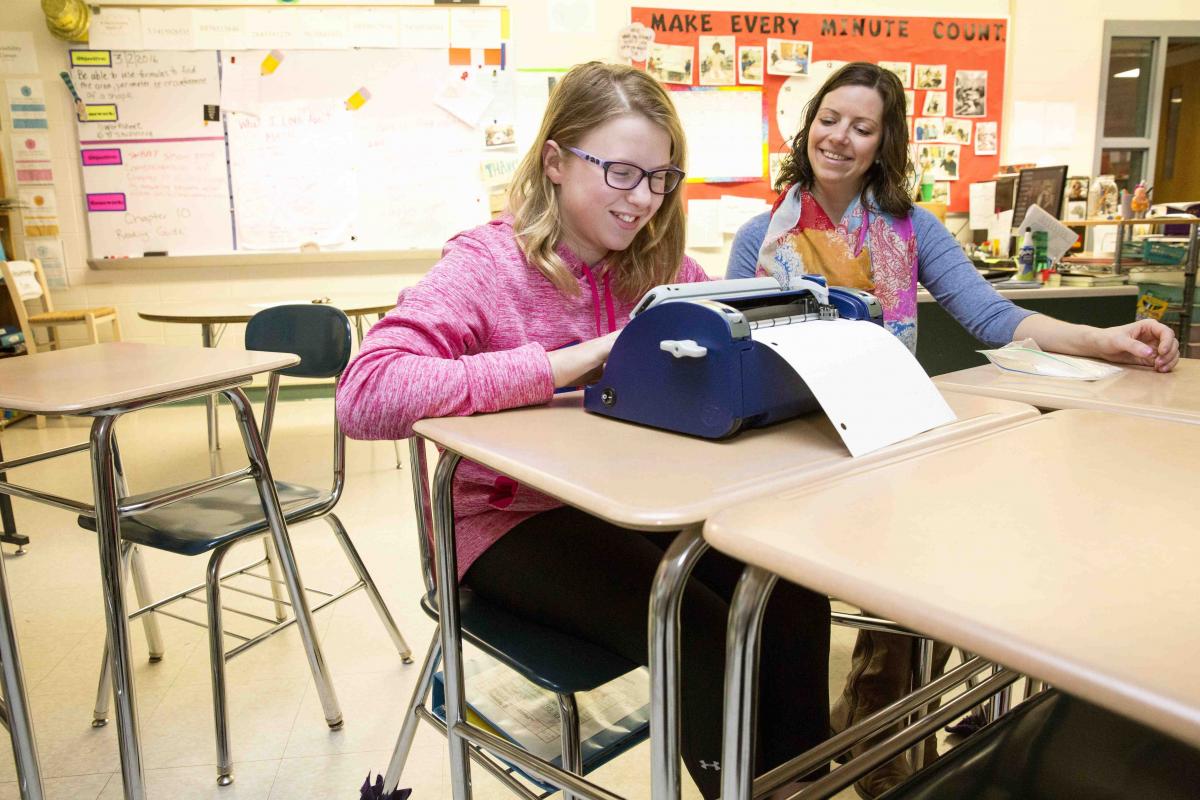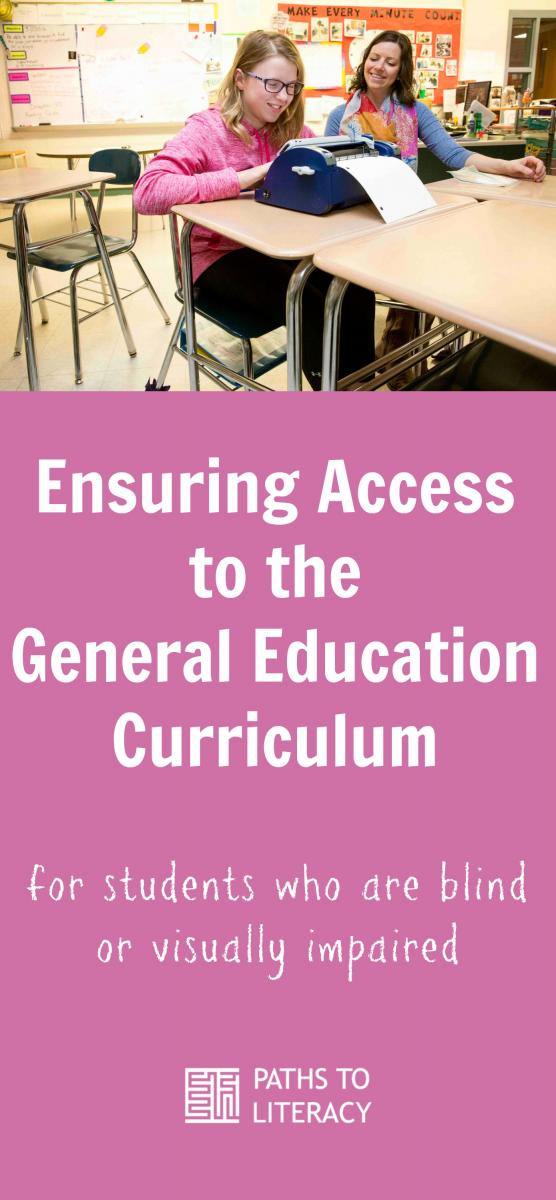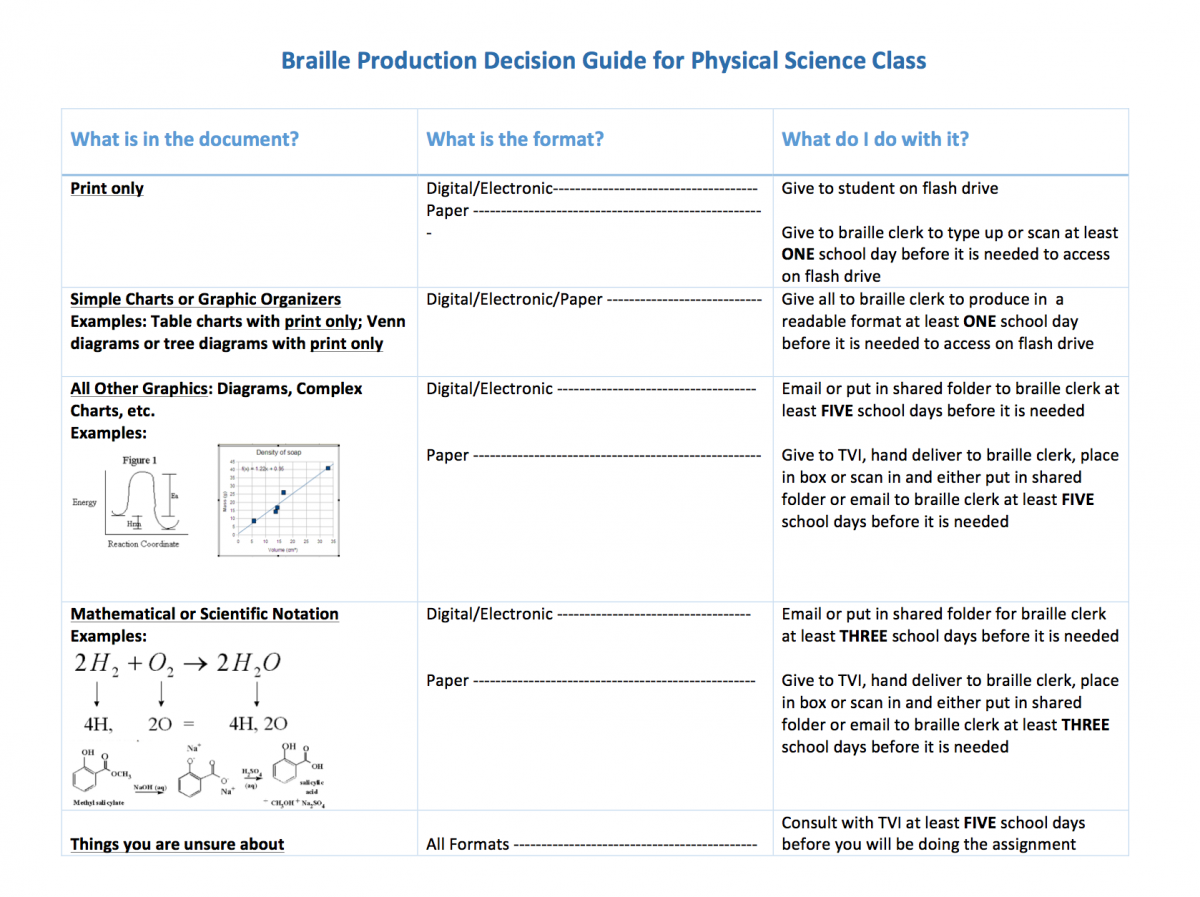Tips for TVIs Collaborating with Gen Ed
 As Teachers of the Visually Impaired one of the major parts of our jobs is to ensure that our students have access to the general education curriculum. This can be difficult throughout a student's school career, and can prove more difficult as the students get older and the curriculum gets harder and more complex. When students reach upper elementary, middle and high school, you are dealing with several teachers and subjects and it can get overwhelming to keep track of. Here are some tips when collaborating with general education teachers.
As Teachers of the Visually Impaired one of the major parts of our jobs is to ensure that our students have access to the general education curriculum. This can be difficult throughout a student's school career, and can prove more difficult as the students get older and the curriculum gets harder and more complex. When students reach upper elementary, middle and high school, you are dealing with several teachers and subjects and it can get overwhelming to keep track of. Here are some tips when collaborating with general education teachers.
-
Connect with the student's teachers as far ahead of time as possible.
If you know you will be the student's teacher the following year, go ahead and find out from administration who the possible teachers for the student will be the following year. We have to order textbooks for the following school year in March, so go ahead and introduce yourself the year before they will have the student. Let them know you need to find out what books they will be using and get ISBN numbers. Make sure you get all books they may use, not just the standard textbook. I always like to tell them up front that we are a team and that I have their back. It's my job to ensure the student has access and that whatever happens we will figure out a way. I let them know that we will talk more before the next school year.
-
Schedule a meeting to introduce the parents and student to the new team.
I usually schedule a meeting during pre-planning with the parents, student, myself, administration and the general education teachers. This way the parents and the student can introduce themselves. The parents will often bring a fact sheet with info about the student and this is a perfect time to practice self advocacy and allow the student to tell his teachers how he prefers to access materials. I like to hand out a "Things to Remember" sheet in addition to giving out the student's IEP accommodations.
-
Provide in-service training for school staff.
You can also do an in-service for all school staff, especially if the student has recently moved up to a new school. Through an in-service you can teach proper etiquette, sight guide techniques and information about blindness. There are in-service materials available. Check out the book When You Have a Visually Impaired Student in Your Classroom, a Guide for Teachers.
-
Provide a Braille Production Decision Guide for tactile graphics.
I also provide a "Braille Production Decision Guide" for the classes that use graphics. I've attached an example of a decision guide for a Physical Science class below.
-
Schedule time to check in with teachers each week.
Schedule specific time in each week to make the rounds during the general education teacher's planning. Often teachers will have questions and won't tell me until they see me face to face. It also helps to stay in the loop.
-
Schedule collaboration time, if possible.
If you can, schedule collaboration time into the IEP and visit classes every so often to make sure things are running smoothly during class time.
-
Make sure the administration supports you.
I find that if the administrator is at that first meeting with the teachers, that what you say is taken more seriously and it will go a long way in getting materials in a timely manner throughout the year.
Remember, most teachers are scared and feeling uncertain when they find out they will have a student who is blind. Some may need their hand held figuratively in the beginning, but they will soon get to know the student and understand that they are just as capable as every other child. Part of our job is to educate others about visual impairments and blindness. Be patient and understanding, but also know when to step in and remind them that we are required by law to provide these students access. If needed, you can quote FAPE (Free Appropriate Public Education). This information is from the Georgia Department of Education, but applies to all states. You can find information on access on page five of this document here: http://www.gadoe.org/External-Affairs-and-Policy/State-Board-of-Educatio...
Take one day at a time. If a general education teacher throws something at you that you are not sure how to accommodate for, it's okay to take a step back and tell them that you need some time to figure out the best way to provide the student access. Talk through the assignment with the general education teacher to gain a full understanding of the expectations. It's okay to also ask other TVIs for advice if your not sure. As long as we are proactive, we can ensure that our students have appropriate access to the general education curriculum.




Comments
Access to the General Curriculum
Access to the General Curriculum
Response to cyralm
Access to General Education Curriculum